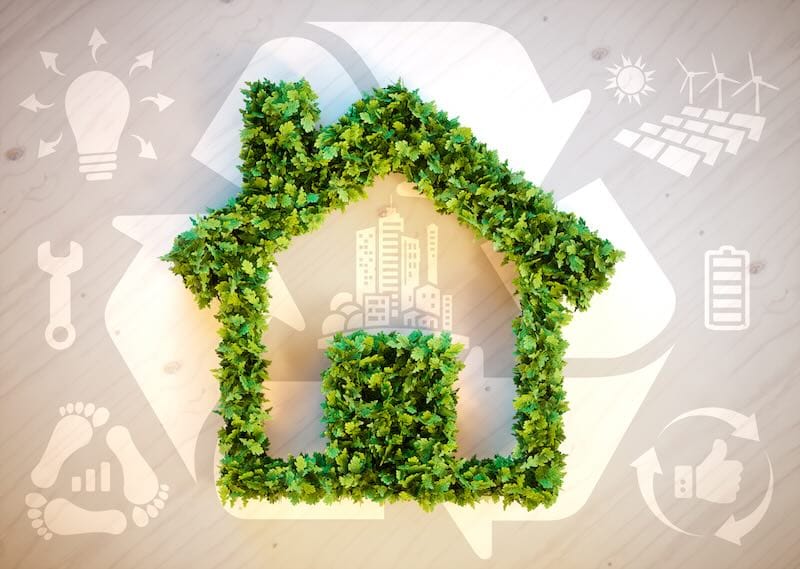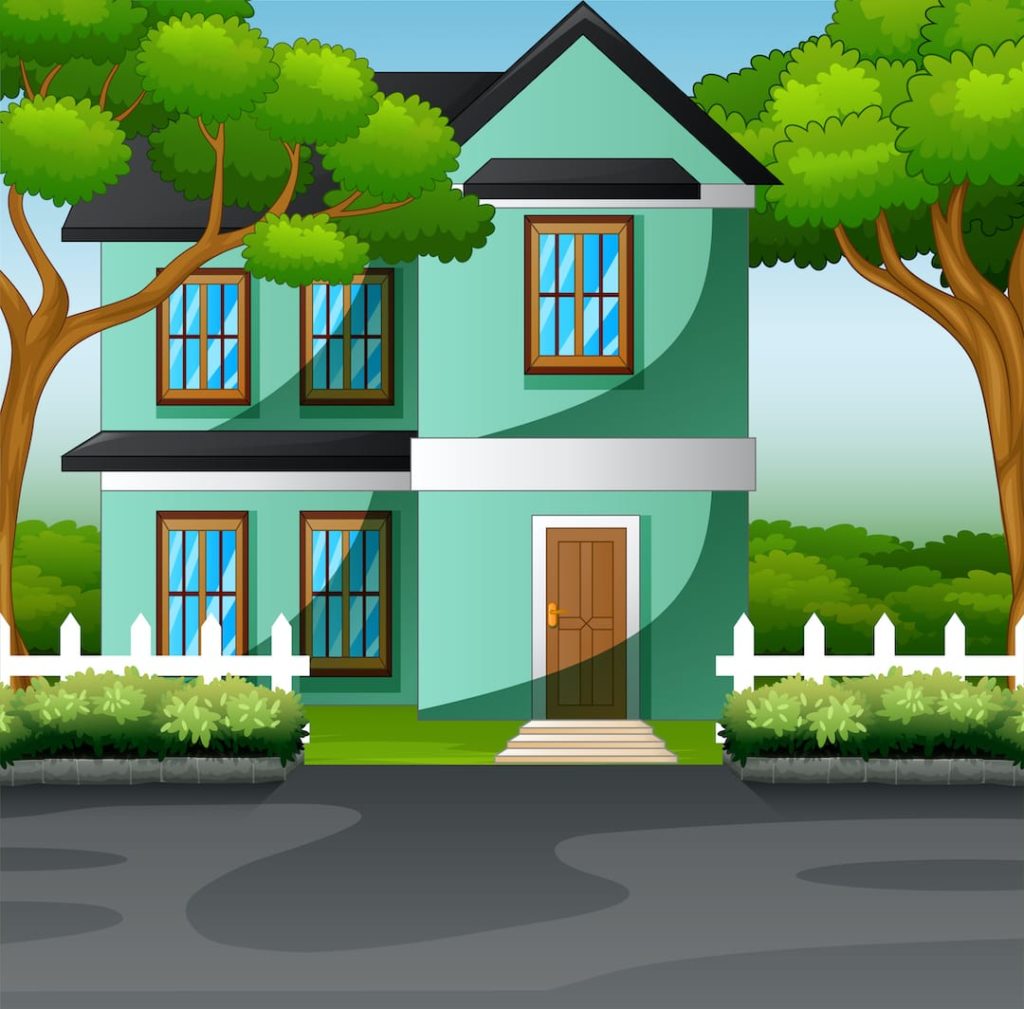Eco-Friendly Home Improvement: Boosting Your Home’s Value & Sustainability

The emphasis on sustainable living is escalating in the whirlwind of modern life. It extends beyond mere recycling—it encompasses a lifestyle that begins at your doorstep.
This guide offers practical steps to enhance your home’s sustainability, augmenting its worth.
Why Eco-Friendly Home Improvements?

Sustainability isn’t a fleeting trend; it’s a lifestyle choice with tangible benefits for you and the planet.
Incorporating eco-friendly improvements into your home contributes to a healthier environment and potentially boosts your property’s value.
Whether you’re a first-time home buyer, an aspiring green warrior, or someone who wants to reduce their carbon footprint, this guide will help you figure out the best strategies for your home.
What Is Eco-Friendly Home Improvement?
 Eco-friendly home improvement is any action to make your home more sustainable and energy-efficient.
Eco-friendly home improvement is any action to make your home more sustainable and energy-efficient.
This could mean utilizing renewable energy sources (e.g., solar panels), replacing outdated appliances with Energy Star ones, adding insulation to improve air sealing, or installing water-saving fixtures like low-flow toilets and showerheads.
These improvements can result in lower electricity bills and improved air quality inside your living space. It’s also been proven that homes with eco-friendly upgrades tend to have higher resale value.
Ultimately, taking steps toward a more sustainable home means creating a healthier environment for you and your family—while also helping to conserve precious natural resources like water and energy.
If you’re ready to start making eco-friendly adjustments in your house, this guide will help you start with the basics.
Here’s what we’ll cover:
• Overview of Eco-Friendly Home Improvement
• Benefits of Going Green
• Steps to Make Your Home More Eco-Friendly
• Potential Challenges When Going Green
• Resources for Further Reading (including tips on finding renewable energy sources)
By the time you finish this guide, you’ll better understand how to make your home more eco-friendly and the positive effects it could have on our environment. Let’s get started!
Eco-Friendly Home Improvement Overview

The term “eco-friendly” refers to products or services that cause minimal harm to the environment. Eco-friendly home improvement is about changing your house to reduce energy usage, support renewable energy sources and materials, and conserve resources like water.
Benefits of Going Green
Making eco-friendly improvements in your home can provide numerous benefits for you and the planet. You’ll save money on monthly utility bills while reducing your carbon footprint at the same time. Plus, homes with green features can be more attractive to buyers, which could increase the value of your home.
Tips for Going Green
Ready to make environmentally conscious changes in your home? Here are some tips to get you started:
- Use energy-efficient lightbulbs
- Install a programmable thermostat
- Upgrade old windows and doors with Energy Star-certified products
- Invest in renewable energy (e.g., solar panels)
- Choose eco-friendly materials for remodeling projects (e.g., bamboo floors, recycled glass countertops)
- Make sure all significant appliances meet Energy Star requirements
- Consider water conservation strategies like low-flow toilets and showerheads
Making these minor adjustments can have a significant impact on the environment.
Not only will going green help reduce your carbon footprint, but it can also save you money in the long run, increase the value of your home, and attract buyers looking for a property that is conscious of its environmental sustainability.
Going green can be easy and inexpensive. Even small steps like using reusable bags when shopping, turning off the lights when leaving a room, and unplugging electronics when not in use can reduce your carbon footprint.
Additionally, investing in energy-efficient products such as LED light bulbs or Energy Star appliances helps reduce emissions while saving you money on utility bills.
Some eco-friendly upgrades may add value to your home if you want to sell or rent it. Buyers and renters will appreciate a property that is conscious about its environmental sustainability, which could give your home an edge over others on the market!
Steps to Make Your Home More Eco-Friendly
- Solar Panel Installation: Solar panels harness sunlight to generate electricity, reducing your dependence on fossil fuels and lowering your energy bills.
- Opt for Energy-Efficient Appliances: These appliances consume less power, helping you save on utility costs while reducing your carbon footprint.
- Improve Insulation: High-quality insulation can regulate your home’s temperature, reducing the need for artificial heating or cooling devices and leading to significant energy savings.
- Water Conservation Measures: Install low-flow fixtures, implement a rainwater harvesting system, and consider drought-resistant landscaping. These changes can lead to considerable water savings over time.
Potential Challenges When Going Green
- Initial Costs: The upfront costs of installing solar panels, buying energy-efficient appliances, or improving insulation can be high. However, these investments usually pay off in the long run through reduced energy bills.
- Finding Reliable Suppliers: Finding trusted suppliers of green products and services can be challenging. Conduct thorough research and seek recommendations from trusted sources to overcome this hurdle.
- Change in Lifestyle: Adopting an eco-friendly lifestyle may require changes in daily habits, which can be initially challenging. However, these changes persistently become second nature and contribute significantly to environmental conservation.
Resources for Further Reading
- Renewable Energy Sources: The U.S. Department of Energy offers extensive resources on renewable energy sources, including how to find providers in your local area.
- Energy Star: This program, run by the U.S. Environmental Protection Agency (EPA), provides information about energy-efficient appliances and products.
- WaterSense: Another EPA initiative, WaterSense, offers tips on conserving water and lists products that help save water.
- Local Resources: Check with your local utility company or municipal office. They often have resources to help homeowners make their homes more eco-friendly, including potential rebates or incentives.
Embracing an eco-friendly lifestyle is a journey, but it’s one worth taking. Not only can it enhance your home’s value and reduce your utility costs, but it also contributes to a healthier planet. It’s a win-win situation for you and the environment.
Practical Ideas Toward an Eco-Friendly Home

Solar Panels
Solar panels are a powerful way to diminish your environmental impact and save on energy costs. They harness the sun’s energy to generate electricity, reducing reliance on fossil fuels.
Energy-Efficient Appliances
Energy-efficient appliances consume less power and typically outlast traditional ones. Opting for these can help decrease utility bills and lessen your carbon footprint.
Insulation
Quality insulation can keep your home warm in winter and cool in summer, minimizing the need for artificial heating and cooling. Efficient insulation significantly reduces energy consumption, leading to lower utility bills.
Water Conservation
Implementing low-flow fixtures, rainwater harvesting systems, and drought-resistant landscaping effectively conserves water. Over time, these changes can lead to significant water savings.
Eco-Friendly Home Improvements and Property Value
Green home improvements can enhance your property’s value. As more buyers prioritize sustainability, homes with green features sell faster and command higher prices.
Case Study: The Sustainable Home Transformation
Let’s consider the story of Betty and Dan Daniels, who recently upgraded their 1950s bungalow into a green sanctuary. They installed solar panels, replaced old appliances with energy-efficient ones, improved insulation, and adopted water-saving measures.
The Daniels’s home value increased by 20%, and they now save hundreds of dollars annually on utility bills. “The changes we made were beneficial for our finances, and they also gave us the satisfaction of knowing we were contributing to a healthier environment,” said Jane Doe.
Wrapping Up: The Journey to an Eco-Friendly Home
It’s always possible to start living a more sustainable lifestyle. Even if you have already invested in your home, there are always ways to reduce your carbon footprint. By incorporating small but meaningful changes into our daily lives, we can work together toward creating a brighter future for ourselves and those around us.
Together, let’s make the world healthier by being mindful of our environmental impact! …